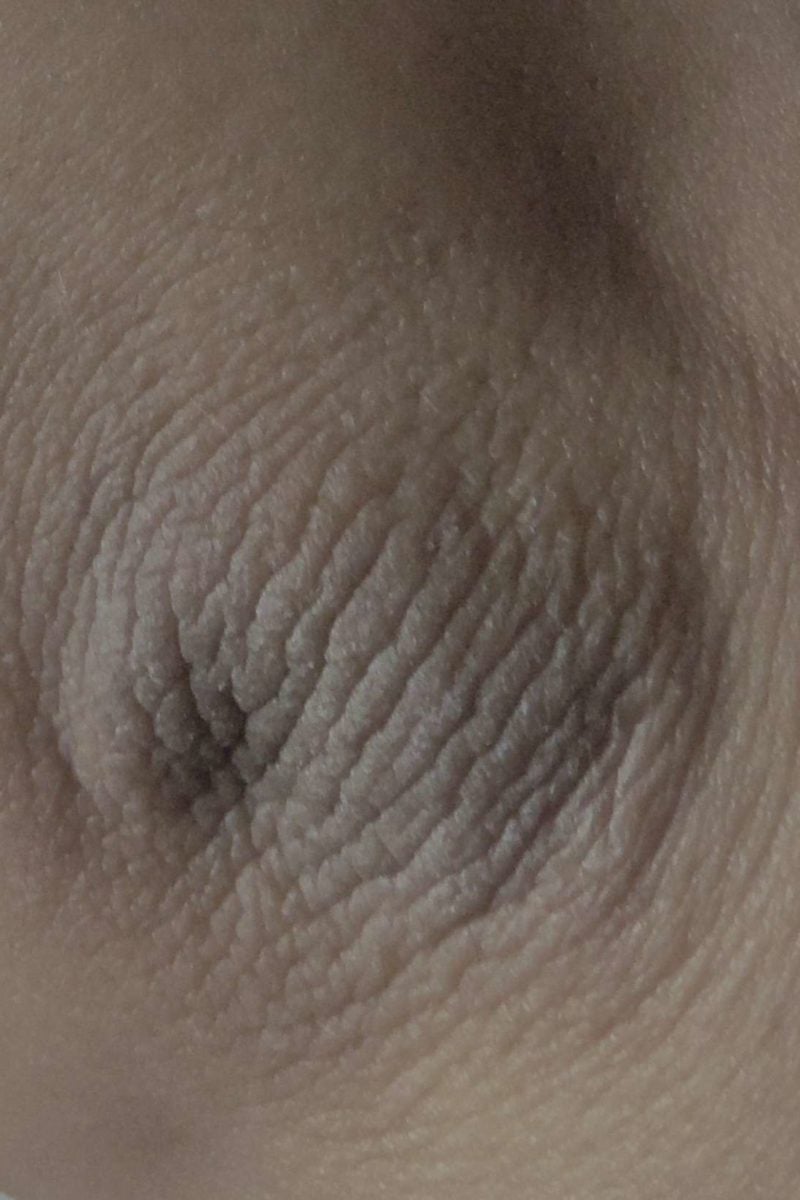Table of Content
Corns do not pose any risk, though they may be very uncomfortable and cause irritation. When it comes to daily footwear, flip-flops typically aren't the best choice. Get the details on how they can affect foot health. Continue this process daily until your corn has softened. After the soak, pat your feet dry with a clean towel and moisturize with a hydrating lotion or cocoa butter. These medicated lotions can be applied daily on the corn to slowly break it down, while still nourishing the skin.
Wearing shoes that fit and using protective pads can help. Foot corns are simply areas of skin that have become thicker than the surrounding skin due to friction and use. Typically, the pressure from this causes the skin to thicken; this may produce extreme pain, affecting the deeper layers of the skin. Commonly found on the feet, corns are circular or cone-shaped. Corns can actually serve a positive purpose – to protect the underlying skin.
Bump Behind Ear Lobe, on Bone, Pea Sized, Pictures, Causes, Treatment & Home Remedies
Also, it inhibits bacteria and fungus from flourishing on your skin. The use of baking soda enables the hard skin on the corn to exfoliate with time and the corn disappears. To effectively remove a foot corn using baking powder, follow the procedure outlined below. Corns generally form on areas which do not experience a lot of weight, such as on top of toes and between toes.
Apply padding on your shoes if corns are a frequent problem. You can also use moleskin to cushion the callus. Simply cut it into two half-moon shapes and place them around the corn. Additionally, you may use toe separators, caps, and crest pads for lowering the pressure. While treatment is generally not required, you can try home remedies and self-care measures to aid recovery, manage the pain, and prevent recurrence. However, always consult a doctor if you have diabetes, poor blood circulation, or any foot deformity.
How can you treat foot corns?
This type of surgery can be done without an overnight hospital stay. Hard Corns – Hard corns are generally caused by poorly fitted shoes and may develop on the top of the toes. There are no side effects of applying castor oil externally on your skin. But just be careful while using, as it is sticky, you might want to wrap a cloth around the area to prevent small spills.
To get the right fit, shop for shoes at the end of the day, when your feet may be slightly swollen. In addition, ask a clerk to measure your foot, and choose shoes that aren’t too loose or tight. The doctor can help you navigate better through the problem and offer more reliable and quick corn on foot treatment. If you have diabetes or another condition that causes poor blood flow, consult your health care provider before treating a corn or callus on your own. Your health care provider can pare down thickened skin or trim a large corn with a scalpel.
Apply lotion to the corn
Calluses are painless hard areas of thickened skin formed to protect more sensitive tissues. Hard and soft corns form as areas of skin, die and small round areas of tissue become denser. Best Foot Doctor NYC is experienced in treating all types of calluses and corns. This article will focus on the third type of corn; how to identify and treat seed corns. Application of moisturizing creams is another effective way of treating corns on feet.

Calluses and plantar warts can often appear very similar to seed corns. However, you can use characteristics like size and appearance to tell these different skin lesions apart. The skin on the bottom of your foot has natural lines and creases.
Those who suffer from circulatory problems or are diabetic should seek advice from their doctor before using any kind of treatment. This is because an injury can lead to infection which may not heal properly. The vinegar in the bread softens the calluses and corns, and they can be simply rubbed off in the morning . Onion is a simple home remedy to treat calluses and corns. Its antioxidants enhance the healing process of these annoying growths on the skin .

They typically don’t cause symptoms unless pressure is applied to them. In that case, be sure to contact your doctor before trying to treat seed corns yourself. In situations where seed corns are persistent or don’t go away using the above methods, they can be trimmed down by a doctor. Never try to do this yourself, as it could lead to an infection. While seed corns are typically round and well-defined, calluses can vary greatly in shape.
Amlactin is a great fragrance-free example, using ammonium lactate. There are various corn pad options, including toe sleeves made from gel materials, corn cushions that go around the bump , and more. Many sufferers have tried padding the area with no luck, knowing that after removing the pads, the irritating bumps are still there. Fortunately, they can often be safely and effectively removed right at home. Massage your feet with oil to boost circulation and relieve the pressure every once in a while. Apply a thin layer of the paste to the corn and cover with a bandage.
Soaking corns and calluses in warm, soapy water softens them. This can make it easier to remove the thickened skin. The most common reason they form is poorly fitting shoes and/or arthritis. They develop where there are areas of pressure or friction, such as on the little toe when it rubs up against shoes, or on the ball of your foot. Never cut the corns using a knife or something that is sharp, as it can cause scarring and serious bleeding.
No comments:
Post a Comment